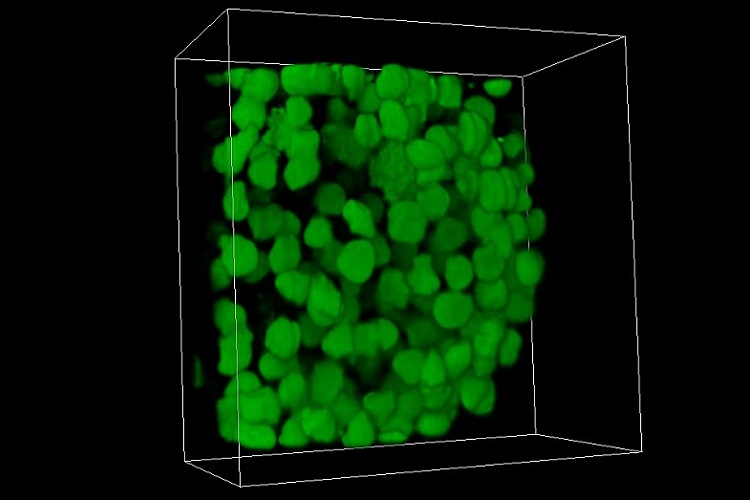Light probes new depths for biomedicine

Scientists at the University of St Andrews develop low-damage optical imaging which could revolutionise the world of biomedicine and neuroscience.
The research findings, published in Optics Letters (Thursday 1 November), reveal that while the use of light for studying biomedical diseases is undergoing a revolution, the light needed to image can be damaging to delicate biological samples.
Light-sheet fluorescence microscopy is a geometry that allows fast, high-resolution imaging with lower optical damage than other approaches as it illuminates a sample with just a thin sheet of light, so other parts of the sample avoid any unnecessary light exposure. The St Andrews team have explored how to probe samples in this geometry using much longer wavelengths of illumination.
The team of researchers used three units of optical energy (photons) to excite fluorescent labels in the sample. This means they can use much longer excitation wavelengths rather than simply exciting the label directly (one photon) or with two photons. This in turn dramatically reduces light scattering and enhances the penetration of light into the sample.
The researchers imaged spheroids of human embryonic kidney cells using two-photon and three-photon excitation. At the spheroid’s surface, both imaging modalities performed similarly. However, at the far side of the spheroid, the image quality for the three-photon light-sheet fluorescence microscopy preserved image contrast while the quality of the two-photon image deteriorated considerably. The team further showed how shaping the input mode into a Bessel beam (a pattern with a bright centre surrounded by concentric rings) could improve this mode of imaging for the future.
Lead author Adrià Escobet-Montalbán said: “The use of Bessel beams in three-photon light-sheet fluorescence microscopy will make it possible to image large samples with high resolution which is crucial for biomedical and neuroscience research.”
Category Research